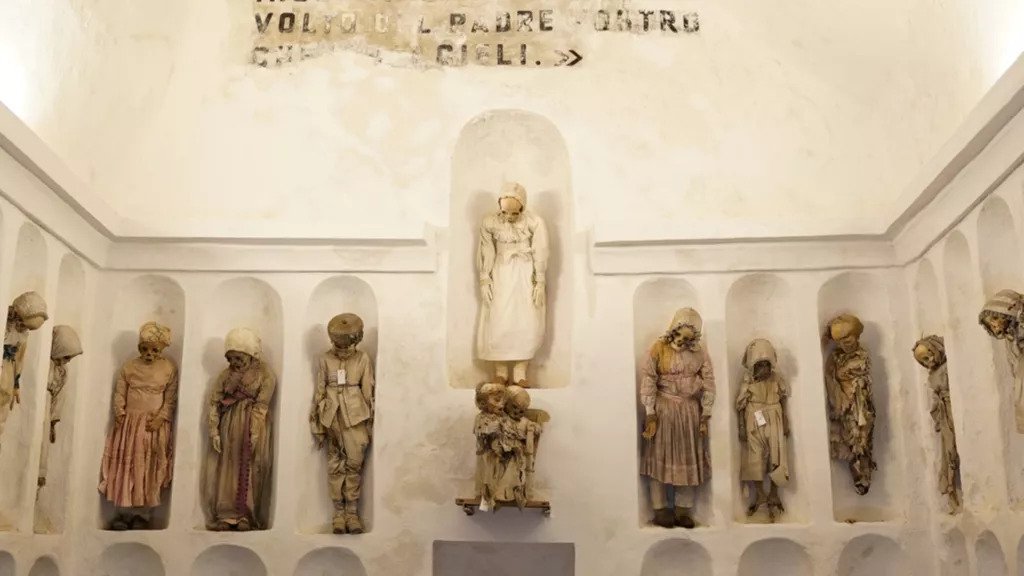Child mummies in Sicily’s Capuchin Catacombs to be X-rayed
The mummified and skeletal remains of more than 160 children lie preserved in the Capuchin Catacombs of Palermo in northern Sicily, and soon, scientists hope to uncover some of the mysteries surrounding their lives and deaths using X-ray technology.

The catacombs contain at least 1,284 mummified and skeletonized corpses of varying ages, according to the new research project’s website.
The catacombs were in use from the late 1590s to 1880, although two additional bodies were buried there in the early 20th century, according to the Palermo Catacombs website.
The upcoming investigation, funded by the U.K.’s Arts and Humanities Research Council, will be the first to exclusively focus on children housed in the underground crypts and corridors.
Specifically, the investigators will examine child mummies that were buried in the catacombs between 1787 and 1880, and they’ll begin by X-raying the 41 mummies housed in the crypts’ “children’s room,” or “child chapel,” The Guardian reported.
“We will take a portable X-ray unit and take hundreds of images of the children from different angles,” Kirsty Squires, the project’s principal investigator and an associate professor of bioarchaeology at Staffordshire University in the U.K., told The Guardian.
The team hopes to better understand the children’s identities and health statuses, as well as examine cultural artefacts such as the garb they were buried in, she said.
The researchers will use X-rays to determine each child’s sex and age, as well as reveal any signs of developmental defects or disease.
These findings will be compared with each child’s clothing, associated funerary artefacts and their placement within the chapel, as well as the method of mummification that was used to preserve them, according to the project website.
The team will also utilize death records they have from the time, although these contain limited information, such as the deceased’s names and dates of death.
Together, these clues should provide an insight into the identities, health and lifestyles of children who were mummified in 18th- and 19th-century Palermo. At the time, being turned into a mummy was a “status symbol” and “a way to preserve status and dignity even in death,” according to the Palermo Catacombs website.
When first built in the late 1590s, the Capuchin Catacombs were used as a private burial site for friars. But in 1783, the Capuchin order began allowing laypeople in the region to be buried there as well, the catacombs website said. And by making a donation to the order, families could pay to have their deceased relatives mummified and put on display in the catacombs.
Corpses could be mummified in one of three ways: through natural mummification, where the bodies were allowed to completely dehydrate in a special room called the “colatoio;” through a process that involved bathing the bodies in arsenic; or by the chemical embalming of the bodies, when a trained person injects the corpse with preservatives.
These processes could create astonishingly well-preserved mummies. Regarding the soon-to-be-scanned child mummies, “Some of them are superbly preserved,” Dario Piombino-Mascali, co-investigator for the project and scientific curator of the Capuchin Catacombs, told The Guardian. “Some really look like sleeping children. They are darkened by the time but some of them have got even fake eyes so they seem to be looking at you. They look like tiny little dolls.”
Read more about the Palermo juvenile mummy project in The Guardian.





